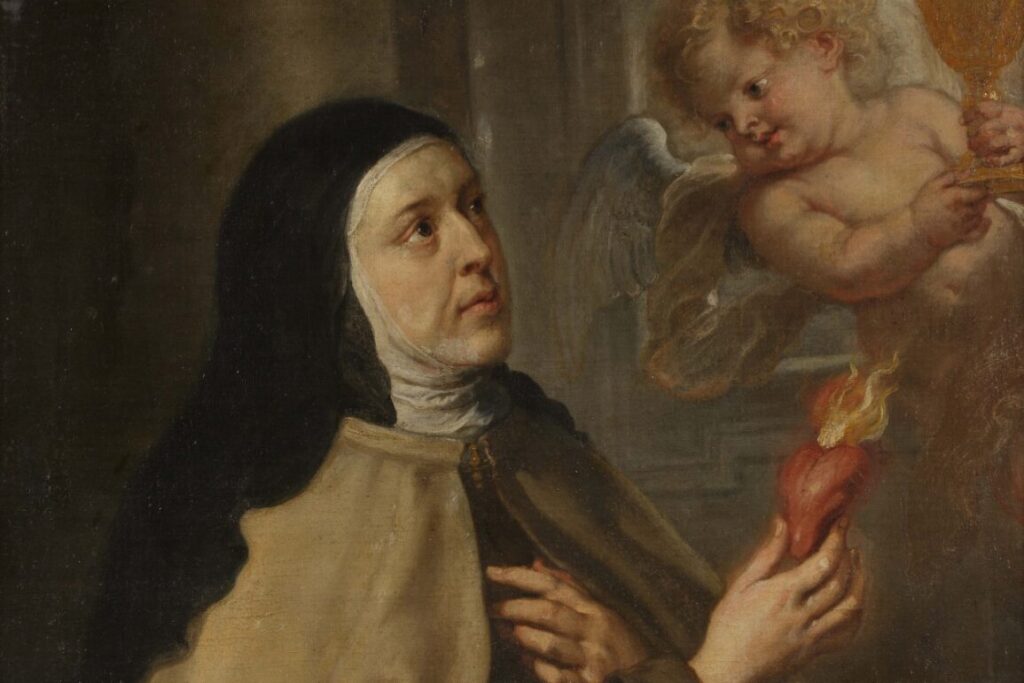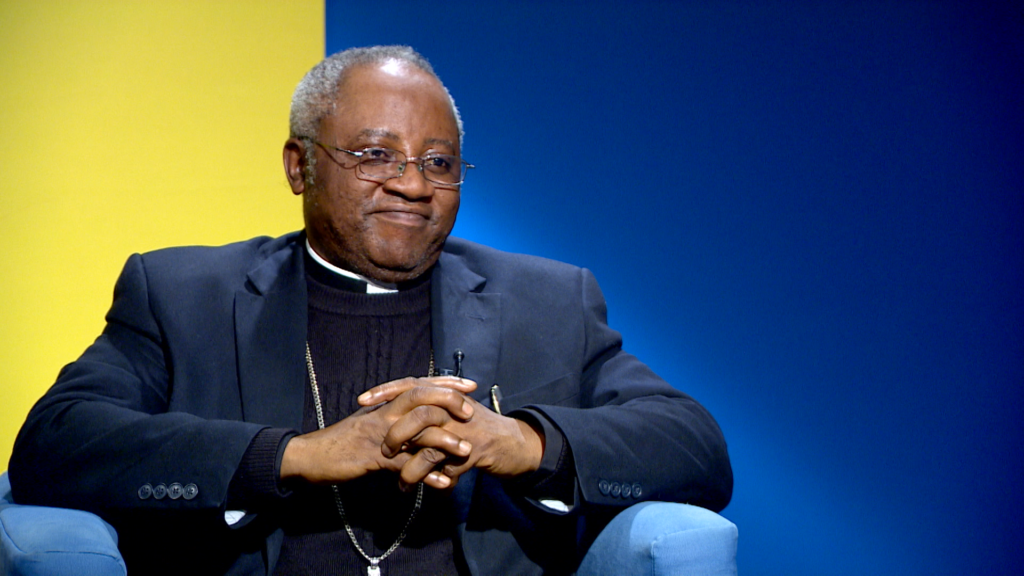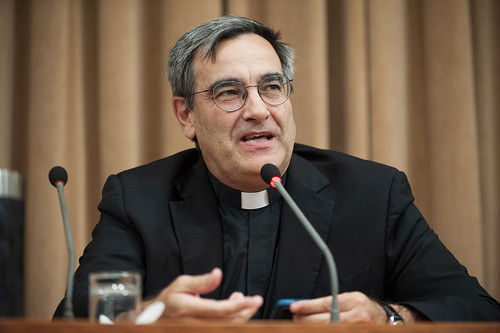Who will the Pope beatify in Belgium?
The Carmelite Anna of Jesus was a direct disciple of Saint Teresa of Jesus

Next Sunday, the Discalced Carmelite nun, the Servant of God, Anna of Jesus will be beatified. Pope Francis will preside over the rite as part of his visit to Brussels. She was prioress of the monastery she founded in Madrid, from September 1586 to November 1589. That same monastery is now located on Madrid’s General Aranaz street, where the remains of Blessed Maria del Sagrario de San Luis Gonzaga, martyr of the Spanish Civil War, rest.
Exaudi spoke about the figure and message of the next blessed, with Father Francisco Sánchez Orejas, OCD, provincial superior of the Order of Discalced Carmelites in Spain, who will accompany the Holy Father in the ceremony of raising Sister Anna of Jesus to the altars.
How has the Carmelite family of Saint Teresa of Avila received the beatification of one of her main disciples?
The Discalced Carmelite Order welcomes this beatification with joy that a witness to the life of Saint Teresa, so closely linked to her, and who did so much for the saint, is recognised by the Church and proclaimed blessed. The saint praised Anne of Jesus, saying that “she was made to govern an empire”. The testimony of her life is an encouragement for the Carmelites of our time, to follow with enthusiasm the lifestyle of Saint Teresa, to which she was faithful throughout her life.
It is clear that she was a nun who was highly appreciated by Saint Teresa…
Anna of Jesus is not just another nun, she is a direct witness who lived with the saint both in Avila and in Salamanca, and in whom the saint herself placed her trust, taking her as prioress of Beas and sending her as founder of Granada. She was the only nun who, during the lifetime of Saint Teresa, carried out a foundation.
And what did the “disciple” think of her teacher?
She herself acknowledges this direct contact with the saint: “I treated Mother Teresa of Jesus, and she treated me with familiarity; that by sight or by word or in writing… I knew almost all her things.”
The next blessed Ana de Jesús also had that drive to be a founder and reformer in France, Belgium, Poland, very much in the style of Saint Teresa, right?
It is true what was said since her death, that she went to France first and then to Belgium and in both countries she established the sacred Order of Discalced nuns of Carmel. And it was not only this, but with her influence she obtained from the princes Albert and Isabel, the license to introduce friars of the same Order into their states, and to bring the Discalced Carmel to France.
But this fell to her because of other designs of God…
The project was to have taken Maria de San José, but when the foundation materialized, she had already died, and that is when Ana de Jesús was chosen, who would be at the head of the six barefoot nuns, who at the end of August 1604 left for Paris. She arrived in Belgium in 1606, at the request of the archdukes Albert and Isabel Clara Eugenia, governors of the Netherlands, who wanted to have a convent of barefoot nuns; in fact, the barefoot nuns would initially settle in the Royal Palace itself. Ana de Jesús, due to age and illness, did not participate directly in the foundation of the Carmelites in Poland, which was carried out by nuns from Belgian monasteries.
Is it known how many convents she went through carrying out the Teresian reform or new foundations?
Ana de Jesús is the protagonist of the foundation of Granada in 1582, helped by San Juan de la Cruz. She herself, by order of Father Jerónimo Gracián, wrote the history of this foundation. In 1586 she was sent to found the convent of Discalced Carmelites in Madrid by Father Doria. In France she founded the convents of the Encarnación in Paris, 1604, Pontoise, and San José in Dijon, 1605. In Belgium she founded the Carmels of Brussels, Louvain and Mons.
Not everyone knows that she met San Juan de la Cruz, with whom she spoke about the Teresian reform…
-San Juan de la Cruz and Ana de Jesús met in 1570, when Ana de Jesús, on a trip from Ávila to Salamanca, passed through Mancera, where she met the first Discalced Carmelites, Brother Juan de la Cruz and Father Antonio de Jesús. And she recounts it thus: “And they (the two Fathers) showed us what our Mother Teresa de Jesús had shown and taught them, and they told me many things that had happened because of the Reform.”
Although at first the saint did not “take well” to her…
In October 1578, Juan de la Cruz arrives in Beas, having escaped from the prison in Toledo in August. Ana de Jesús, who does not understand the depth of Brother Juan, and although she treats him with delicacy, writes to Mother Teresa complaining about not having a good director for her nuns. She does not like Brother Juan to call the Mother “his daughter” and so she tells the saint, who responds: “Please be assured that I would appreciate having my father Brother Juan de la Cruz here, who is truly my father and one of those who benefited the most from communicating with him. Let them do it, my daughters, with all simplicity, which I assure you they can have as with myself, and it will be of great satisfaction to them, as he is very spiritual and has great experience and letters. Here they miss him much less.”
Then nothing would separate them…
Saint John of the Cross was to become the confessor and director of the community of Beas. This period in Beas was fruitful for the saint. He dedicated his work Las Cautelas to the nuns. He read and commented on the Spiritual Canticle and the Ascent of Mount Carmel. Already in Granada… Ana de Jesús encouraged and impelled the saint to finish the Spiritual Canticle, which he finished in 1584 and dedicated to Mother Ana de Jesús: “Declaration of the songs, which deal with the exercise of love between the soul and the Spouse Christ; in which some points and effects of prayer are touched upon and declared, at the request of Mother Ana de Jesús, prioress of the barefoot nuns in San José de Granada. Year 1584.”
We can see an admiration of Saint John of the Cross for her…
As we have just said, Saint John of the Cross dedicated the Spiritual Canticle to her. But he, who knew Saint Teresa and Anne of Jesus well, left us a beautiful eulogy of Anne, saying that “Mother Anne is a true daughter and faithful portrait of our blessed Mother Teresa. God has been pleased to take the latter for himself and leave the former for our consolation.”
How true is it that Blessed Anne of Jesus also had her dark night of faith? Illness accompanied her from a very young age, the death of her parents, suffering from misunderstandings.
Sister Anne of Jesus was not without suffering from all kinds. When she was two years old, her father died, when she was nine years old, her mother died, leaving her and her brother under the care of her maternal grandmother. She was deaf and mute until the age of seven, when she regained her speech; they say that she soon learned to read and write. Ana de Jesús paid her tribute for defending the spirit of Teresa by being removed from her position as prioress of Madrid and confined to a cell for three years, before being taken out of Madrid and sent to Salamanca. She spent the last five years of her life, 1616-1621, ill, almost paralysed, due to pleurisy, and continuing to exercise her role as prioress of the Carmel of Brussels. Ana de Jesús died in March 1621 with a reputation for sanctity, with great veneration and even pomp at her funeral.
What other virtue can we today recall from this nun from the mid-16th century?
She put all her effort into the transmission and publication of the work of her friends Saint John of the Cross, Brother Luis de León, and particularly that of Saint Teresa. Ana de Jesús is responsible for the rescue of the Book of Life of Teresa from the Inquisition and the meeting prior to the preparation, by Luis de León, of the Salamanca edition of 1588. She was a woman of prayer, and a teacher of prayer.
She prayed, suffered and worked…
We can observe her example in her ability to bear tribulations with fortitude and good spirit. As well as the endurance with which she endured pain and illness. We also recognize her penitential spirit, manifested in sobriety and frugality in the most basic aspects of life. She had a special concern and charity for the poorest, and a great devotion to the person of Jesus Christ in his passion and in the Eucharist.
We are faced with an example to follow, not only in Carmel, but in the entire universal Church, right?
We see her as an exceptional woman, a religious woman who, enveloped in humility, penitence and simplicity, radiates around her the flame of human vitality and her dynamic spirituality. Likewise, we see her as a teacher of spiritual life, a contemplative, incomparable and tireless active soul. A model of a prioress, according to the heart of Mother Teresa.
Related

Despite hardships, Christianity is growing “astronomically” in northern Nigeria
Ayuda a la Iglesia Necesitada
10 April, 2025
3 min

“Christianity, a Powerful Engine of Social Transformation”
Exaudi Staff
09 April, 2025
3 min

Let God be God
Albert Cortina
11 March, 2025
25 min

Fernando Puig, new rector of Santa Croce
Fundación CARF
19 February, 2025
6 min
 (EN)
(EN)
 (ES)
(ES)
 (IT)
(IT)

